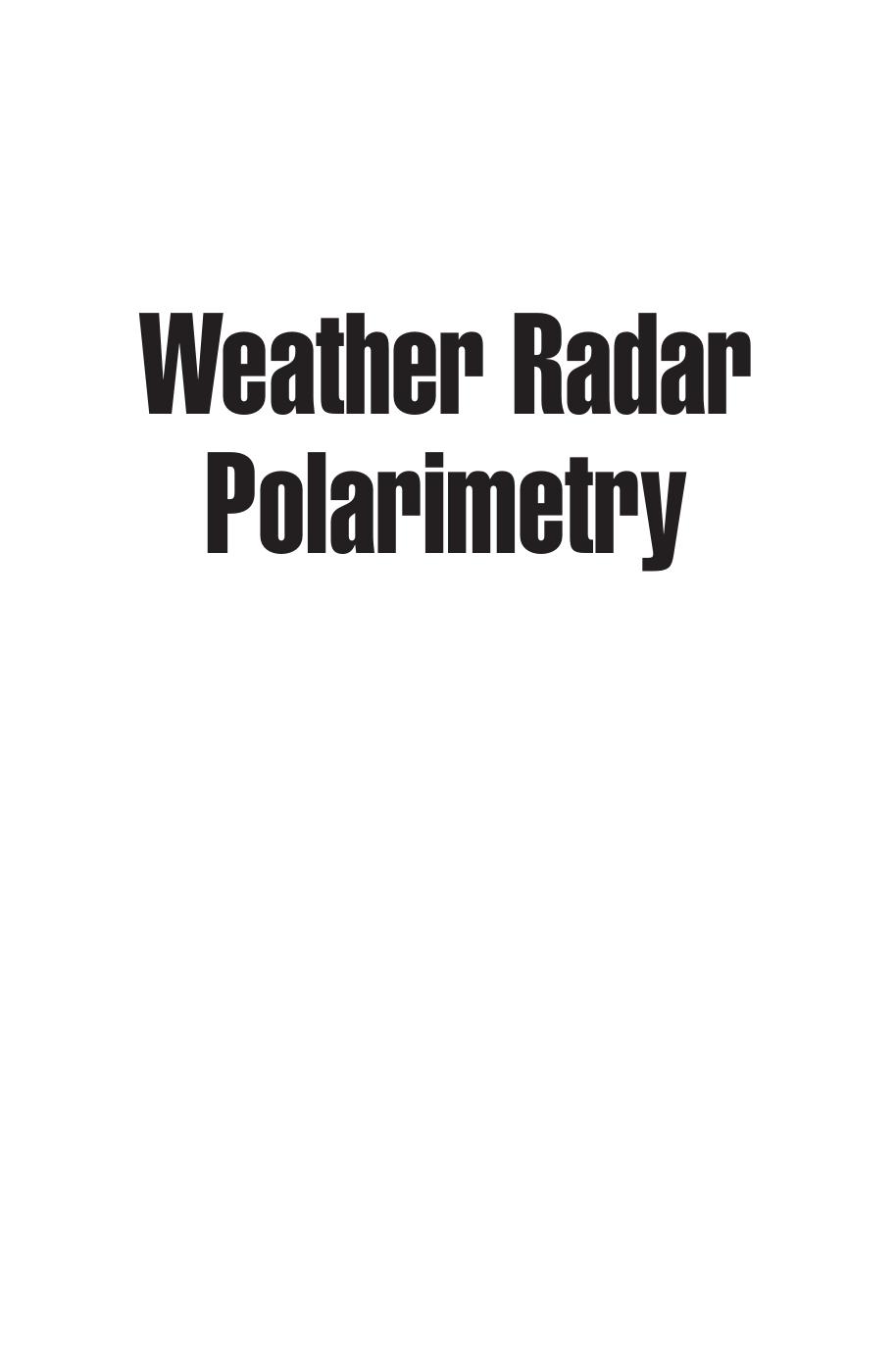Weather Radar Polarimetry by Guifu Zhang

Author:Guifu Zhang
Language: eng
Format: epub, pdf
Publisher: CRC Press
(5.77)
where M is the number of samples in the dwell time; V1 is the time series of voltage samples from the first scan; and V2 is the down-sampled time series of voltage samples from the second scan from the same volume but collected at a higher pulse repetition frequency (PRF).
FIGURE 5.10 Probability density functions of cross-correlation coefficients between two scan signals for clutter, zero weather, and weather, respectively. (From Li, Y., et al., 2013b. IEEE Transactions on Geoscience and Remote Sensing, 51, 2373–2387.)
Because the correlation time for ground clutter is typically much longer than that for weather signals, ρ12 is expected to be much larger for ground clutter than for either weather signal (w or w0). Figure 5.10 shows the PDFs of for clutter, zero weather, and weather signals. As expected, clutter has, in general, a much larger ρ12 than that of weather, and the overlap area between weather and clutter in the PDF plot is less than 31%. Hence, the scan-to-scan correlation provides useful information for detecting clutter from weather echoes.
Download
This site does not store any files on its server. We only index and link to content provided by other sites. Please contact the content providers to delete copyright contents if any and email us, we'll remove relevant links or contents immediately.
| Automotive | Engineering |
| Transportation |
Whiskies Galore by Ian Buxton(41525)
Introduction to Aircraft Design (Cambridge Aerospace Series) by John P. Fielding(32885)
Small Unmanned Fixed-wing Aircraft Design by Andrew J. Keane Andras Sobester James P. Scanlan & András Sóbester & James P. Scanlan(32570)
Craft Beer for the Homebrewer by Michael Agnew(17930)
Turbulence by E. J. Noyes(7697)
The Complete Stick Figure Physics Tutorials by Allen Sarah(7135)
Kaplan MCAT General Chemistry Review by Kaplan(6594)
The Thirst by Nesbo Jo(6432)
Bad Blood by John Carreyrou(6271)
Modelling of Convective Heat and Mass Transfer in Rotating Flows by Igor V. Shevchuk(6219)
Learning SQL by Alan Beaulieu(6032)
Weapons of Math Destruction by Cathy O'Neil(5825)
Man-made Catastrophes and Risk Information Concealment by Dmitry Chernov & Didier Sornette(5644)
Digital Minimalism by Cal Newport;(5388)
Life 3.0: Being Human in the Age of Artificial Intelligence by Tegmark Max(5182)
iGen by Jean M. Twenge(5158)
Secrets of Antigravity Propulsion: Tesla, UFOs, and Classified Aerospace Technology by Ph.D. Paul A. Laviolette(4984)
Design of Trajectory Optimization Approach for Space Maneuver Vehicle Skip Entry Problems by Runqi Chai & Al Savvaris & Antonios Tsourdos & Senchun Chai(4837)
Electronic Devices & Circuits by Jacob Millman & Christos C. Halkias(4744)
